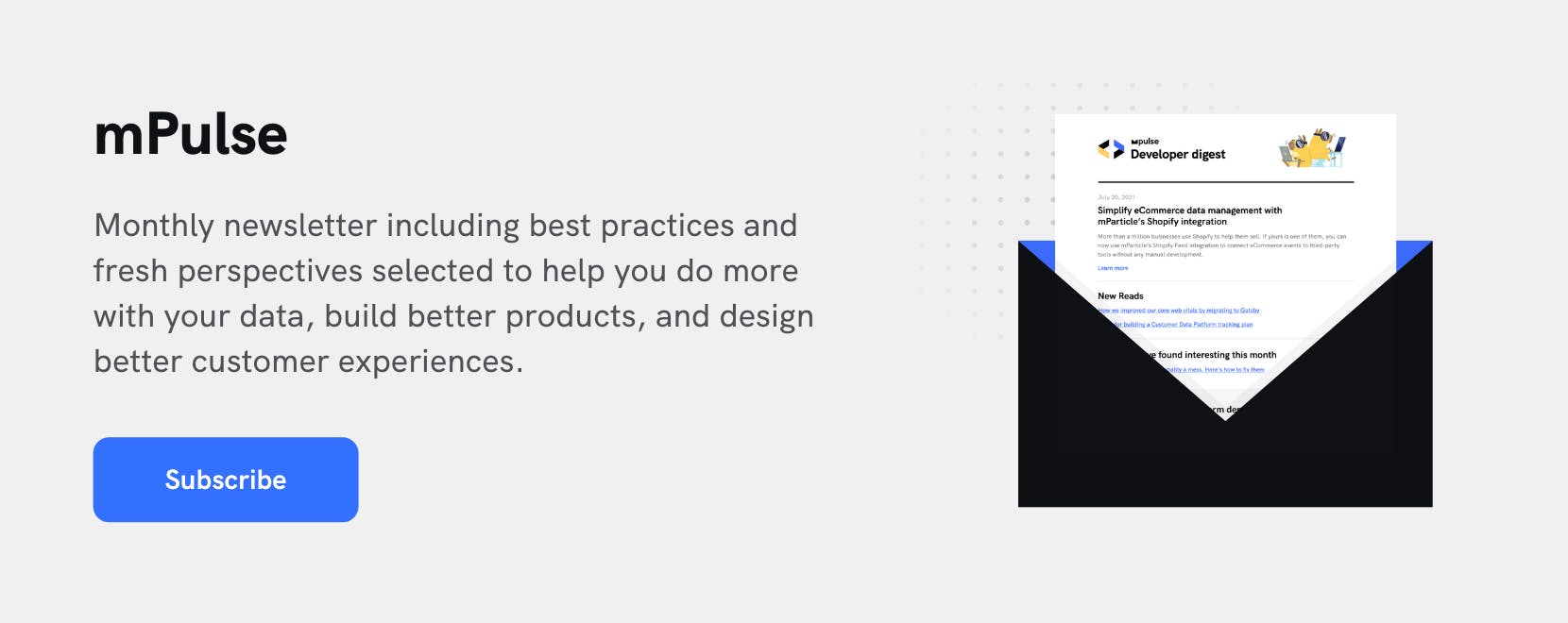Honesty, buzzwords, and the power of saying “no”: how to create successful vendor partnerships
On a recent episode of the podcast Connected by mParticle, host Abhi Seeth sat down with Taylor DiVincenzo, Sr. Solutions Engineer, Brand Marketer, and Programmatic Media Buyer. His unique experience on all sides of the marketing equation led to a great conversation on how brands and vendors can foster meaningful partnerships.

Start the relationship with honesty from both sides
In Taylor’s experience, many tech vendors over-promise the abilities of their product. This often leads to clients making false promises to their exec team, and then having to deal with the consequences when a product doesn’t live up to expectations. It’s an easy trap to fall into, as vendors will always want to bring on new clients, and clients will naturally gravitate towards a product that seems to “solve all their problems.”
So how do we move away from these misaligned relationships and towards something better for both parties? Taylor’s advice is to be 100% transparent with your company’s needs for a product or service, which should signal a good partner to behave in the same fashion. He calls it “organic collaboration.”
How does that translate on the vendor or agency side? It means communicating what your product or service can do without overinflating the benefits and abilities. This can be difficult, especially when your competitors are also out in the market touting their products as silver-bullet solutions. This shift is best accomplished by reframing the timeline of the relationship, moving towards long-term partnerships that don’t begin and end with deal-signing and check cashing. A vendor needs to create a regular stream of communication to ensure that the customer is using the product in the best way possible, long after the contract is signed.
Taylor says it succinctly: “It’s just old school customer service and collaboration. This industry moves at an alarmingly fast pace. If we just took a second to really, really flesh out what it is we want or desire from a product, from a platform, or from a feature, it becomes a lot easier to prescribe that to partners.”
Avoid buzzwords and focus on practical value
Before a meeting with a vendor or a potential customer, ask yourself “Why am I taking this meeting?” If you’re a brand booking a meeting with a vendor, make sure you’re not just there to check a box next to a hype new buzzword. This can be helped on the vendor side as well, by not entering meetings depending on buzzwords to sell your product.
Taylor reminds vendors that they’re selling a specific solution, and to hone in on the unique benefits of that solution: “If I’m a vendor, I have four massively impactful examples that I want to show the client that, you know, I don't know your business as intimately as you do, but one of these is bound to check a box for you that really gets you excited–organically excited–right?”
Taylor recommends a similar approach if you’re on the brand side meeting with a vendor. “I want to come to an RFP or a meeting or a demo or a pitch with my one to four use cases of like, here's what my clients are painfully asking me to solve for them. You know, let me pitch these back to this provider–this vendor–and see if we can't create some sort of dynamic solution together.”
Once again, it’s all about verbalizing what you want from the product. To create a fundamentally successful relationship, the brand needs to be able to communicate exactly what they need from the vendor’s product, whether that’s specific KPI goals or something more nebulous. Likewise, the vendor needs to accurately portray their product or service. Taylor is passionate about moving business away from these transactional meetings and into true partnerships. To do that, he reiterates “We need to be more collaborative in that discovery phase.”
Both sides need to be ready to say no
Later in the podcast, host Abhi Seeth agrees with Taylor, saying “It’s better to say no quickly, when you know it’s an obvious no.” If you’re living in a world of transactional relationships, this can seem insane or naive, but if you’re trying for a true paradigm shift–if you’re looking to build lasting partnerships where a single contract isn’t the only goal–then it’s a more natural way to do business. The importance of an early no is true on all sides of a relationship, whether you’re a vendor or a customer.
Taylor thinks there can be nothing more valuable in building that relationship than honesty at the start. He imagines the reaction of meeting with a vendor who says no: “In the sea of craziness–in the sea of everyone saying they do everything–here's one guy that didn't say that.”
Of course, never just say no; say no with an explanation and say no with context. Signal trust by telling the truth in those early meetings. Maybe it means a contract isn’t signed this quarter, but both parties have already formed a partnership, and when the product or service does make sense, another meeting won’t just be accepted, it’ll be celebrated.
If you're interested in more from Taylor, check out the full episode. Connected by mParticle is free and available on all major podcast apps, so make sure to subscribe for more insight on how the thought leaders of tomorrow are evolving the customer experiences of today.




